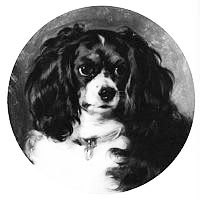In those early days of dog domestication, as the wolves with the smaller flight distance became more common, they start
 ed to live with humans. At the outset, it is likely that these early dogs lived on the fringes of human society much like stray dogs today do. And, also likely, the protectiveness of the wolf-dogs was one of the first traits recognized in them that the early humans valued. Initially alerting to intruders, the early dogs would also have attacked other creatures trying to take their territory and resources. The humans in the early villages would have benefited from this first security system. It is not hard to imagine that those humans would have seen the benefit of guard dogs, and likely first put them to use as such.
ed to live with humans. At the outset, it is likely that these early dogs lived on the fringes of human society much like stray dogs today do. And, also likely, the protectiveness of the wolf-dogs was one of the first traits recognized in them that the early humans valued. Initially alerting to intruders, the early dogs would also have attacked other creatures trying to take their territory and resources. The humans in the early villages would have benefited from this first security system. It is not hard to imagine that those humans would have seen the benefit of guard dogs, and likely first put them to use as such.It wouldn't have been long for them to discover the other useful attributes of the early dogs, either. Canine help in tracking and running down game would have greatly improved the hunting efficiency of the humans, increasing their yeilds and the size of the family that they could support. The herding instinct is very strong in some lines of dogs, a behavior descendant from the coordinated pack hunting strategies of wolves. I think a sound case could be made for the idea that, without the dog, humans would'nt have been able to domesticate cattle, sheep, goats and even geese and ducks. Even today, any rancher will tell you that their herding dog is worth several human workers.
As dogs were used for these purposes, certain behaviors and even anatomy would have been selected for. The early humans would only have spent time and resources on the dogs that showed promise for whatever task they demanded, be it guarding, tracking, hunting or herding. Eventually, they
 would have crossed specific dogs together, hoping to get a litter of puppies with similar skills. Though the ideas of genetics were unknown, the basic fundamentals of heredity may have been recognised. behavior and instinct is certainly heritable, just as anatomy and physiology are. Anyone who sees a 5 week old herding pup (like this Belgian Tervuren) confronted with sheep for the first time will recognize that instinct!
would have crossed specific dogs together, hoping to get a litter of puppies with similar skills. Though the ideas of genetics were unknown, the basic fundamentals of heredity may have been recognised. behavior and instinct is certainly heritable, just as anatomy and physiology are. Anyone who sees a 5 week old herding pup (like this Belgian Tervuren) confronted with sheep for the first time will recognize that instinct!So, over the centuries (and, in some cases, independantly of each other) several breed types arrose the became something of the foundation for our modern breeds. Those types are mastiff, collie, terrier, sight hound, scent hound, drafting (pulling loads), and companion (specifically the ancient east Asian breeds such as Shih Tzu and Pekingese). These basic breed types can be found in all of today's dogs.
Eventually came the reign of Queen Victoria, who - few would argue - can be considered the first major patron
 of the sport of breeding and showing purebred dogs. During her reign, the world saw the creation of the first wealthy middle class. In invention of machines and improved standard of living meant that there was a segment of the population with time (and money) on their hands. Queen Victortia herself was a great fan of several breeds of dogs, especially collies anf Cavalier King Charles Spaniels. She commissioned many paintings of dogs, both alone and in protraits with herself.
of the sport of breeding and showing purebred dogs. During her reign, the world saw the creation of the first wealthy middle class. In invention of machines and improved standard of living meant that there was a segment of the population with time (and money) on their hands. Queen Victortia herself was a great fan of several breeds of dogs, especially collies anf Cavalier King Charles Spaniels. She commissioned many paintings of dogs, both alone and in protraits with herself.Seeing the Queen's dogs, the citizenry became enamoured with dogs as well. The breeding and showing of dogs became a very important status symbol among the middle class and elements of the upper class as well. If one could afford to maintain a kennel, one muct have a lot of money indeed! During this time, there was a vertiable explosion of breeds as people tried to get the next best and most unique breed. Shows provided an opportunity for people to show off themselves as well as their dogs.

And, so the purebred dog - and the "dog fancy," as it was called - was born! In the next installment, I'll talk about the state of the purebred dog today.


No comments:
Post a Comment